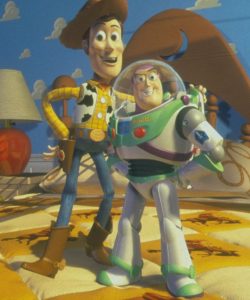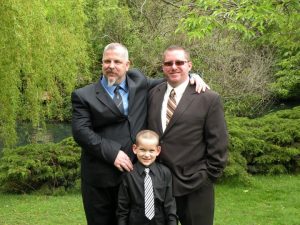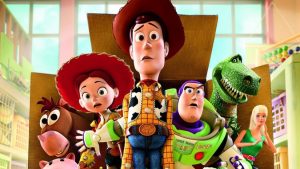“You’ve got a friend in me/
You’ve got a friend in me/
When the road looks rough ahead/
And you’re miles and miles/
From your nice warm bed/
You just remember what your old pal said/
Boy, you’ve got a friend in me/
Yeah, you’ve got a friend in me.”

1995 was a special year for me. I was 15 years old. I had just discovered my love and passion for theatre. Writing, acting, directing, I loved it all. I loved the sound my feet made as I ran across the stage. I loved the way the lights warmed me on cold winter days. I loved the feeling of the adrenaline running through my veins. I loved the attention. 1995 was also the year one of my favourite movies ever, “Toy Story” came to the silver screen. We’ve all seen it, I’m sure.
This touching movie about a group of toys who come to life. It’s a story of love, friendship, loyalty, and courage. “Toy Story” means a lot to me for many reasons. Yes, it carries fond memories of my childhood, harking back to a time of (relative) innocence. More than that, though, it means something because it came out the same year that I met my best friend, Stanley. I didn’t know it then, but as the years would go on, Stanley and I would become a lot like Woody and Buzz. How, though, does a “children’s movie” relate to conflict and communication? Let me tell you.
“You’ve got a friend in me/
You’ve got a friend in me/
If you’ve got troubles/
I’ve got ’em too/
There isn’t anything, I wouldn’t do for you/
We stick together and can see it through/
‘Cause you’ve got a friend in me/
You’ve got a friend in me.”

Stanley and I have always shared a unique relationship, one that I’ve written about before and likely will again in the future. The one constant in our friendship, besides absolute loyalty to one another, has always been conflict. That’s an odd thing, isn’t it? We think of conflict in these negative terms. We picture aggression, anger, hostility. Does it have to be defined like that, though?
“Some other folks might be/
A little bit smarter than I am/
Bigger and stronger too/
Maybe/
But none of them will ever love you/
The way I do, it’s me and you/
Boy, and as the years go by/
Our friendship will never die.”
Stanley and I fight. Like, I can’t even begin to tell people how much. Like Woody and Buzz, the casual observer might see our conflicts as dysfunctional. Any outsider would think we hate each other. You might pretend not to listen (but we know you are), and you’d think you hear us being passive-aggressive to one another. But you’d be wrong because the truth is that there is nothing passive about how we communicate. But why is this bad?
“You’re gonna see it’s our destiny/
You’ve got a friend in me/
You’ve got a friend in me/
Yeah, you’ve got a friend in me.”

The key to maintaining a 25-year friendship for Stanley and I, much like Woody and Buzz, is the knowledge that all of our conflicts, regardless of the outcome, are always going to be win-win. The idea that we have in common, the common denominator, as it were, is a saying by the late, great, Nelson Mandela.
“[We] never lose. [We] either win, or {we] learn. But [we] never lose.”
My friendship with Stanley has taught me a lot throughout the years. It’s taught me that conflict isn’t always bad, and some things just aren’t worth fighting over. I’ve learned to look at conflict as a chance to grow, change, and evolve. So, what’s my conflict resolution style? I try and enter every conflict understanding I may not be right, understanding that I’m probably wrong. My resolution style is to attempt to respect the other person’s side before the conflict even begins.
